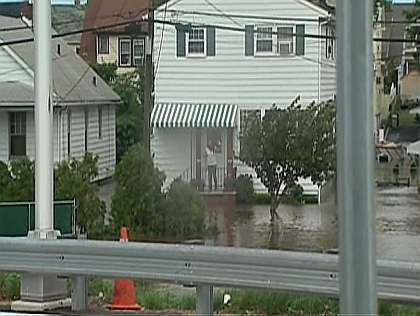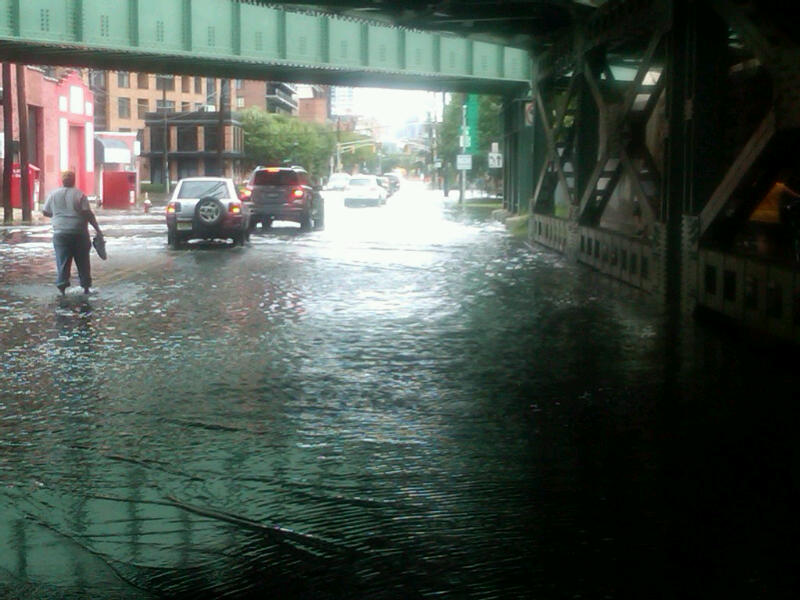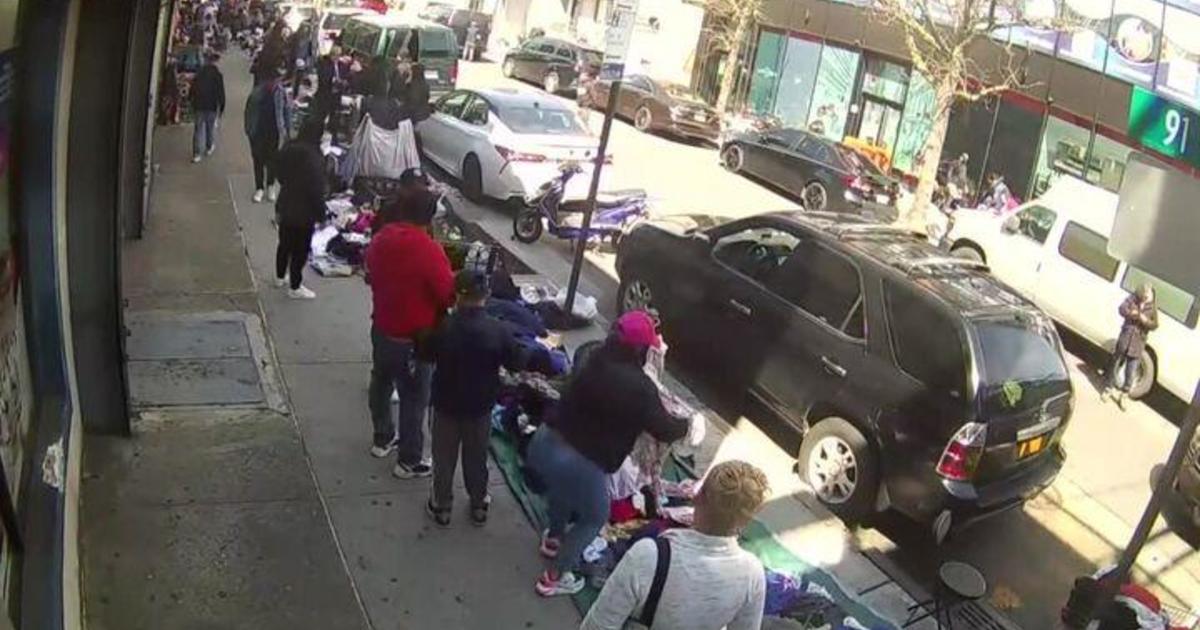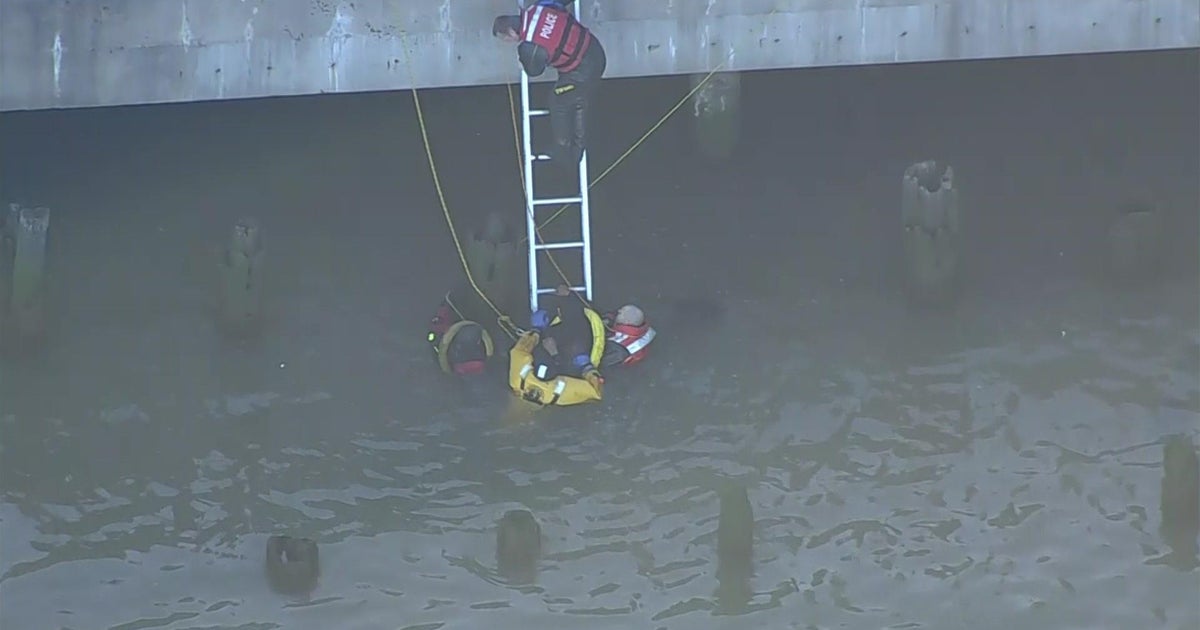Serious Flooding Concerns Remain In N.J.
LODI, N.J. (CBSNewYork/AP) -- Floodwaters rose all across New Jersey on Sunday, closing roads from side streets to major highways as Irene, the first hurricane to make landfall in the state in more than a century, weakened and moved on, leaving more than 600,000 homes and businesses without power.
The Saddle River, steadily rising since Sunday afternoon, overran its banks and left streets and roads in Lodi, New Jersey underwater. By 6 p.m., floodwater rose to the front doors of neighboring homes and flooded out basements.
Businesses, closed in anticipation of Hurricane Irene, nevertheless saw water damage.
Residents told CBS 2's Derricke Dennis that the flooding was the worse in recent memory, and many cited Hurricane Floyd in 1999 as being comparable, but not as damaging.
"The last time I experienced something like this was 1999, and I was five," said Vraj Patel of Lodi.
The flooding was especially bad for this used car lot owner Sal Enea. He worked frantically to relocate his inventory to higher ground. His shorts and boots were soaked, but the high water still meant he could lose his shirt.
"It was fine this morning. It backed up the drains. All the drains came back up and it filled up the whole lot," Enea of Route 46 Motors in Lodi told Dennis.
Floodwater trapped the family of Alma Rodriguez at their door.
"It's actually not receding. This morning I still couldn't see all my steps. As of now, I only have one more step before the water reaches my main porch," Rodriguez said.
The one bright spot in Lodi was a Good Samaritan named Eddie, who took to his boat to check on his neighbors. He gave a ride to one, only to find it flooded.
"I took my paperwork with me. My documents are safe," said Niki Shah. "My clothing, my furniture is all wasted."
Latest On Irene | Photo Gallery | Share Your Pics
"The inland flooding is a thing that has been almost as much a concern of mine as the coastal thing," said Gov. Chris Christie.
Christie attributed one death to the storm -- a 20-year-old woman who had called police to ask for help getting out of her flooded car in Salem County was found dead in the vehicle eight hours later.
1010 WINS' Susan Richard Gets An Irene Update From Gov. Christie
Podcast
Christie ordered 2,000 members of the New Jersey National Guard to help with search and rescue work as officials started to assess the damage.
There were massive evacuations in the state Saturday or even earlier as the storm raced up the Atlantic Coast toward Jersey. After the storm arrived, it appeared the crisis would last for days as rivers continued to rise and utility companies warned that some outages could last weeks.
There were reports of several rescues Sunday.
By Sunday morning, about 15,000 people were at emergency shelters across the state. Christie said New Jersey Transit buses would start returning them to the shore towns they left Friday and Saturday. But in some places in northern New Jersey where rivers were rising, new shelters were opening.
Sections of the New Jersey Turnpike and Interstate 295 were among those blocked. Even in the places where high water wasn't a problem, fallen trees were.
WCBS 880's Levon Putney On Flooding In On The Hoboken/Jersey City Border
Podcast
"Please stay in your home," Christie said on NBC's "Today Show." "With over a half a million people without power and over 250 roads closed, there is no safe place to be outside right now in New Jersey."
Forecasters and emergency management officials worried about flooding in coastal areas and on numerous inland waterways that were already higher than normal after an unusually wet August.
By early Sunday as the skies cleared, Irene had dumped more than 5 inches of rain on many parts of the state, and flood warnings were in effect for every major river in the state. Some of the highest rain totals were far inland, such as 7.7 inches reported in northwest New Jersey's Stockton.
The Raritan River, which was hit hardest by rains spun off from Hurricane Floyd 12 years ago, was seen as perhaps the state's most serious flood risk again this time. It was not expected to crest until Sunday evening.
Authorities in Essex County were using a 5-ton truck to taxi people through the water away from their homes in Fairfield, where the Passaic River was high and still rising on Sunday. Sheriff Armando Fontoura said he was readying for the river to crest Sunday night.
WCBS 880's Peter Haskell In Manasquan
Podcast
Nearly every other waterway in the state was seen as a flood risk. The Delaware through Trenton was high, quick-moving and strewn with big branches.
A woman called dialed 911 from her car in Salem County around 1:40 a.m., asking for help getting out as water rose, state police Sgt. Brian Polite said. Her body was found in the vehicle in Pilesgrove around 9:30 a.m.
In coastal areas, where more than 1 million residents and visitors were evacuated, there was the sense that the hurricane wasn't as damaging as feared.
But it still was damaging. Most of the two-mile boardwalk in Monmouth County's Spring Lake was wrecked.
And on Long Beach Island, an 18-mile barrier island off the coast of central New Jersey, ocean water washed onto the main road through Beach Haven, and sand from the beach was scattered along several stretched.
In the shore town of Belmar, the storm surge pushed sand and debris across the avenue that runs along the beach and deposited it as far as two blocks inland. Lifeguard equipment boxes were scattered all over the street, and dead fish were found on land.
The boardwalk, which runs the entire beachfront, was coated with a thick layer of mud and sand but appeared otherwise unscathed.
"I was waiting for the storm this morning; I didn't realize it was over already," said Damien Davis of Belmar, who rode out the storm with his mother.
Christie said the direct damage cost might not be high in many areas, but the business cost would be huge as many resort towns won't be back to normal for Labor Day weekend, usually one of the busiest times of the year at the shore.
In his Pleasantville home overnight without electricity, 55-year-old Harry Webber listened to howling winds and expected to wake up and find heavy damages. While searching in vain for someplace open and selling coffee, he assessed the area just inland from Atlantic City.
"I was pleasantly surprised to see that most of my town is still in one piece," Webber said.
In Atlantic County, the biggest problems were downed trees and power lines, and debris on roads. But there were no reports of any serious structural damage or injuries. The city's casinos, which shut down Friday, were scheduled to reopen Monday.
The hurricane made landfall near Little Egg Inlet, just south of Long Beach Island, the state's longest barrier island, with 75 mph winds before 6 a.m. It turned into a tropical storm as it continued to move north along the East Coast.
It was only the third time a hurricane made landfall in the state in the last 200 years. An 1821 storm crashed into Cape May and zipped up the route of what is now the Garden State Parkway. A 1903 hurricane struck just north of Atlantic City and ripped out piers in the beach resort.
Please leave a comment below…
(TM and Copyright 2011 CBS Radio Inc. and its relevant subsidiaries. CBS RADIO and EYE Logo TM and Copyright 2011 CBS Broadcasting Inc. Used under license. All Rights Reserved. This material may not be published, broadcast, rewritten, or redistributed. The Associated Press contributed to this report.)





